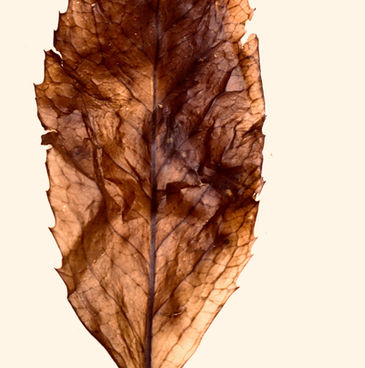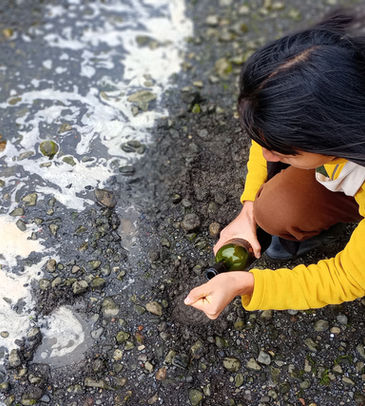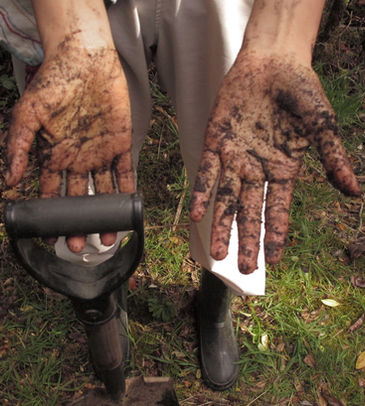AVANZADA SUR
2024
The 2024 edition of Avanzada Sur has been characterized by promoting a collective experience rooted in the territory, awakening reflections from a decolonial perspective and embracing ancestral knowledge. The focus has also been on ecology and the relationship between humans and the plant world.
The residents currently research and create from methodologies encompassed in collaborative feminist practices and views; linking art, territory, science and technology, from languages that come from dance, visual arts, photography, performance and more.

2024 RESIDENTS
AND PROJECTS IN DEVELOPMENT

MAILZA BERNARD
Brazil
Mother and multi-media artist, Bachelor of Ceramics from UFSJ. She identifies as a ‘miscegenated’ woman, with a euro-indigenous heritage, which is why she frequently faces the challenge of social and cultural ‘non-belonging’. Her art emerges in response to this, fusing ceramics with anthropological studies of aromatic plants, cosmovision and ancestral memory.
Odora Project
The Andes are revealed as the great natural border that separates Brazil and Chile, or the birthplace of Mailza Bernard and the space where Avanzada Sur takes place. What would be the talking points between these places? What ancestry do they share as a territory?
The forests of the south and the “wet green smell” open her research towards the relationship between memory and aromas. Particularly, in terms of how disconnecting native essences can lead to a loss of identification with the territory itself, affecting perception and belonging. Mailza continues to delve into the ethnobotanical history of the plants that appear on the road between the two territories, crossing and blurring the boundaries between cultures and natures.

DANIELLA SANTIBÁÑEZ
Chile
Performer, Performer, and Pediatrician. Bachelor of Arts with a mention in Dance from the University of Chile. She guides the body dance and improvisation practice Bomba Solar, in which she investigates the exploration of one's own body language in open and closed spaces, in relation to the collective energy with the transit of sunlight.
Ensayos sobre la Luz | Essays on light
While the days in the Southern Hemisphere become shorter and less clear, the illuminations for Essays on Light by Daniella Santibáñez appear, which transposes questions and practices where the body is the flesh of the affective experience of sunlight.
Daniella has sensed the seasonal transition in the territories of Contuy and Melimoyu. Her exercises have been recorded by installing pinhole boxes, giving rise to an archive of solargraphs that capture the traffic of sunlight. Unlike previous performative practices, the artist proposes to delve into the procedures of analogue photography as a means to connect the reaches of light on the terrestrial. "In other words, to test the idea of making a body for or embodying sunlight and thereby fictionalize that the body is the support and threshold of those imaginaries."

ANDREA SOLANO
Ecuador
She began his artistic training in performing arts. He then studied Theatre at the Central University of Ecuador. Together with a group of colleagues, she mediated different activities around culture, art and social processes, through the occupation of a space/house in the city of Kito. In 2021, she moved to the Kichwa community of Kotama to start a self-construction project. She is currently working on her postgraduate thesis, focused on the visuality of the production and consumption environments of corn chicha.
Justicia Espiritual ASWA | Spiritual Justice ASWA
Weekly, Andrea prepares chicha, one of the many results of the art of fermenting. Along with this exercise, she imagines visualizations where body and ferment converse with each other, where the narrative possibilities of the present inevitably find an echo in the forms of this ancestral practice.
The track that Andrea follows is between the human body and the body containing the ferment or "fondo", a clay vessel where chicha is traditionally fermented. She observes and studies the containers in which people currently ferment - glass, plastic, wood, mud - as a way of understanding the types of containers of these liquids and of these ways of life. A form of alchemical archaeology that aspires to decipher the terrains surrounding the fermentation process. While that happens, the artist prepares an action in her equatorial territory for the next solstice on June 21, as a gesture-commitment to corporeality, ferment and space.

TAINA VILLALOBOS
Chile
She is a Seed Keeper and visual artist graduated from the University of Chile. She has worked with the audiovisual and the installation-sculptural. The artistic path she has chosen in recent years has expanded her horizons, leading her to explore the world of feature films in a broadcast mode.
Memorias del Suelo | Soil memories
Taina weives the ground plots to activate the Soil Memories. She coexists with plants and their transformation cycle as a means to deepen her research on organic seeds and their propagation in rural and urban spaces. These days, the focus of her explorations is on translating the routines of a seed keeper into the languages of poetics and arts. A daily routine of research and constant care, as a creative process, which finds its depth in the construction of logs of this work, composed of photographs, seed scanners, fleeting thoughts, fragments of books and an exchange of sensibilities, also made possible by other guardians.
Memories of the Soil is a seed exchange project that takes the form of sculptures, video art or installations, works that will be activated live in the way it happens in the daily scenarios of this trade, such as seed houses or the greenhouse, where, "dormant, they wait for their germination season to be propagated".

Paloma Pollan
Argentina
She has carried out audiovisual projects and installations, residencies and workshops. Her artistic practice has an outside-in approach, in direct integration with the territory, allowing it to propose encounters and lines of exploration. Her creative processes arise from an intimate connection with the environment, integrating sensory and affective influence.
Paisaje Comestible | Edible Landscape
What are the traditional foods that define a community’s culture? What meanings do they have in the affective memory of its inhabitants? Paloma investigates the role of food in the construction of community bonding relationships and the role of ancestral food knowledge for the preservation of biodiversity and the identity of a community.
Edible Landscape explores the act of eating as a ritual; an ally in strengthening emotional ties with the territory. For Paloma, “when we eat, the landscape literally becomes part of us. Our body absorbs the energy, the nutrients from these foods and there is a kind of symbiosis with the environment that creates a new identity that defines us and affects us physically, emotionally and mentally. " How we can rescue and keep this knowledge fresh is one of the questions that motivates this research. Put into practice, Paloma collects elements of the landscape and explores the conservation powers of the different organic footprints of the landscape.

Pantera Villalva
Argentina
Anti-racist, queer and Afro-Argentine activist dedicated to research in dance, performance and visual arts. Their artistic production represents the counterattack and spellbinding of a colonial regime of death and oblivion. They investigate crosses between body, identity and memory, through experimentation, archive technique, technologies, different materialities, and the claim of body knowledge.
Sankofa Project
Pantera works around the symbolism of the Sankofa - an African ideogram that takes the form of a mythical bird. From that place, they focuses their cartographic exercise on the birds of the Big Island of Chiloé and their stories, making his way towards themes such as representation, magic and meanings. They explore the potencies of the symbolic terrain, complementing his findings with a decolonial proposal on the origin of things. Their project is driven by an interest in collecting archives of the landscape and its architecture, to compose digital drifts with animation, as well as visuals and materials.
As a third axis, Pantera explores textile work through the manufacture of flags that operate as a resource for its future exhibition. "Planting a flag with a symbolism that was made invisible to me seems to be an invitation; a provocation for the exercise of memory, but from an anti-racist and decolonial perspective."
Con el soporte de DOEN FOUNDATION

Colaboran





















































